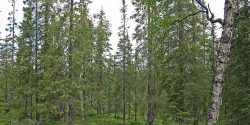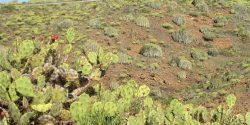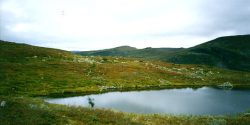Past research
My team has explored global patterns of biotic interactions through a research synthesis of published and original data. Our databases now include over 6,000 estimates of the percentage of leaf area consumed by insects, collected from 1000+ species of woody plants in multiple localities worldwide, several hundreds of estimates of parasitism and predation on natural prey and hundreds of measurements of predator’s attack rates on artificial (plasticine) prey. We have paid particular attention to latitudinal changes in biotic interactions in boreal forests of Northern Europe, from 60°N to 69°N.
Ongoing research
I am currently compiling published data and collecting original data (see Fieldwork and expeditions ) to explore geographical patterns of losses of plant biomass to sap-feeding and root-feeding insects across the globe.
Featured publications
Zvereva, E. L., Zverev, V., & Kozlov, M. V. (2020) Predation and parasitism on herbivorous insects change in opposite directions in a latitudinal gradient crossing a boreal forest zone. Journal of Animal Ecology, 89, 2946–2957 (doi: 10.1111/1365-2656.13350).
Latitudinal patterns in both insect herbivory and top-down pressure on herbivorous insects in European forests located from 60°N to 69°N varied considerably and inconsistently among the four study years, so that only some of the year-specific correlations with latitude were statistically significant. Nevertheless, meta-analysis combining correlations across years, preys and enemies revealed general decreases in predation by birds (on both natural and model prey) and ants, but an increase in parasitism rates, from low to high latitudes. Consequently, the overall impact of natural enemies on herbivorous insects did not change with latitude and was therefore an unlikely reason for the poleward decrease in damage of birch leaves by insects in our gradient.
Zvereva, E. L., Zverev, V., Usoltsev, V. A., & Kozlov, M. V. (2020) Latitudinal pattern in community-wide herbivory does not match the pattern in herbivory averaged across common plant species. Journal of Ecology, 108, 2511–2520 (doi: 10.1111/1365-2745.13438).
We found that the herbivory measured by averaging relative losses of individual plant species and community-wide herbivory show different latitudinal patterns in boreal forests. This finding demonstrated that the contributions of plant species to the total foliar biomass production should be taken into account in studies of spatial patterns of herbivory which test community-level hypotheses.
Zvereva, E. L., Castagneyrol, B., Cornelissen, T., Forsman, A., Hernández-Agüero, J. A., Klemola, T., Paolucci, L., Polo, V., Salinas, N., Theron, K. J., Xu, G., Zverev, V., & Kozlov, M. V. (2019) Opposite latitudinal patterns for bird and arthropod predation revealed in experiments with differently colored artificial prey. Ecology and Evolution, 9, 14273‒14285 (doi: 10.1002/ece3.5862).
Bird attack rates on artificial prey negatively correlated with model luminance in cold and temperate environments, but not in tropical environments. Bird predation on black and on white (extremes in luminance) models demonstrated different latitudinal patterns. When attacks on models of eight different colors were combined, arthropod predation decreased, whereas bird predation increased with increasing latitude. We conclude that the importance of different predators may show contrasting patterns, thus weakening the overall latitudinal trend in top-down control of herbivorous insects.
Kozlov, M. V., Lanta, V., Zverev, V. & Zvereva, E. L. (2015) Global patterns in background losses of woody plant foliage to insects. Global Ecology and Biogeography, 24, 1126-1135 (DOI 10.1111/geb.12347).
We for the first time demonstrated that the latitudinal gradient in background losses of woody plant foliage to insects across the globe is hump-shaped. This was done by the analysis of published and original data from 836 localities. In temperate and polar zones, but not in the tropics, levels of herbivory correlate with mean air temperatures and are therefore likely to increase with climate warming.
Kozlov, M. V., Lanta, V., Zverev, V. & Zvereva, E. L. (2015) Background losses of woody plant foliage to insects show variable relationships with plant functional traits across the globe. Journal of Ecology, 103, 1519-1528 (DOI 10.1111/1365-2745.12471).
We demonstrated that factors affecting the distribution of herbivory among species of woody plants differ between the climate zones, and that the predictive power of at least some of the theories/hypotheses addressing plant–herbivore interactions at large spatial scales varies among climates and/or biomes.
Co-authors
B. Castagneyrol
T. Cornelissen
A. Forsman
J. A. Hernández-Agüero
T. Klemola
V. Lanta
L. Paolucci
V. Polo
N. Salinas
K. J. Theron
V. A. Usoltsev
G. Xu
E. Zvereva
V. Zverev
Co-operating scientists
Over 200 researchers from around the world



